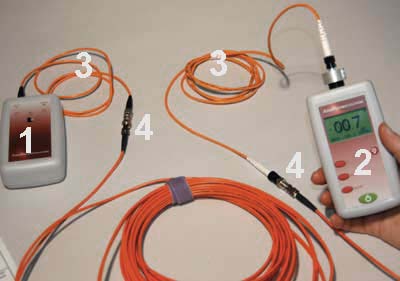Why Optical Fiber Testing Tools Is Vital for Network Upkeep
In the world of network upkeep, the relevance of optical fibre screening devices can not be overstated. By utilizing devices such as Optical Time Domain Name Reflectometers and Optical Power Meters, network professionals can ensure conformity with sector standards while proactively resolving potential interruptions.
Value of Routine Testing
In the realm of telecommunications, the relevance of normal testing of optical fibre can not be overstated. Optical fibre networks work as the foundation of modern-day communication systems, facilitating high-speed information transmission over substantial distances. Routine screening makes sure the stability and dependability of these networks, spotting prospective issues prior to they intensify into substantial troubles.
Evaluating aids determine mistakes, such as breaks or bends in the fiber, which can lead to boosted signal loss and endangered efficiency. Anomalies in transmission can weaken user experience, resulting in reduce data prices and service interruptions. Via systematic testing, network operators can preserve optimum performance, ensuring marginal downtime and taking full advantage of solution accessibility.
It provides documented proof of network health and wellness, which is crucial for audits and assessments. In conclusion, normal optical fiber screening is important for keeping the functional performance, security, and long life of telecommunications infrastructure, inevitably making certain a smooth communication experience for individuals.
Trick Kinds of Testing Devices

Another crucial device is the Optical Power Meter, used to determine the power levels of optical signals in the fiber. When matched with a source of light, it enables the evaluation of link loss, making sure that the network runs within defined parameters.
Additionally, a Fiber Identifier is indispensable for recognizing certain fibers in a multi-fibre wire without interrupting solution. This tool aids in maintenance tasks by determining the appropriate fiber for testing or repair.
Last But Not Least, Visual Mistake Locators (VFL) are employed to find breaks and mistakes in fibre cords by discharging a visible light. Together, these testing devices form a vital toolkit for preserving and fixing optical fibre networks, guaranteeing reputable efficiency and minimizing downtime.
Troubleshooting Common Issues
When repairing common problems in optical fiber networks, specialists often experience a variety of troubles that can impact efficiency and connection. One widespread issue is signal loss, which may come from aspects such as incorrect splicing, bends in the fibre, or filthy adapters. Using an Optical Time Domain Name Reflectometer (OTDR) allows service technicians to determine the exact area of faults and evaluate the honesty of the fibre optic wire.
Another typical issue is attenuation, which refers to the decrease of signal stamina over distance. This can arise from too much bends or incorrect installation techniques. Regular screening with power meters and source of lights can aid identify excessive attenuation and optical fibre diameter analyser figure out if the setup abides by sector criteria.

Enhancing Network Performance
Addressing common concerns such as signal loss and depletion sets the foundation for enhancing network performance in optical fibre systems. By using advanced optical fiber screening tools, network managers can identify and fix mistakes that compromise signal honesty. This proactive strategy not only protects against deterioration of solution yet also maximizes the general effectiveness of the network.
Normal testing permits the detection of prospective problems prior to they intensify, ensuring minimal disturbance to users (optical fibre diameter analyser). By measuring specifications such as insertion loss, return loss, and optical power levels, specialists can gain useful understandings right into the wellness of the fiber network. This data-driven method makes it possible for targeted upkeep strategies, helping with quicker repair work and reducing downtime
In addition, keeping ideal efficiency levels is vital for sustaining the enhancing demands of modern applications, such as high-def video clip streaming and cloud computing. Boosted network performance translates to enhanced individual experience, faster data transmission, and greater reliability.
Cost-Effectiveness of Upkeep
Purchasing optical fibre screening equipment repays considerably in terms of upkeep costs. By making use of advanced screening tools, network drivers can proactively spot mistakes and issues within the fiber optic framework. This very early identification decreases the danger of devastating failures that might result in comprehensive downtime and expensive repair services.
Additionally, the capacity to promptly analyze the condition of fiber cables enables for more effective appropriation of upkeep sources. Professionals can focus their efforts on locations that require instant focus, instead of carrying out wide, time-consuming assessments that might not yield vital understandings. This targeted approach not only decreases work prices but also boosts the total performance of upkeep strategies.
In addition, normal screening with optical fibre equipment enhances the life-span of the network facilities. In recap, the cost-effectiveness of upkeep is considerably enhanced via the calculated usage of optical fibre testing tools, eventually leading to a robust and trustworthy network.
Verdict
In conclusion, optical fiber testing devices plays a vital duty in maintaining network integrity and performance. Normal testing is necessary for very early fault detection and reliable troubleshooting, inevitably boosting network integrity.